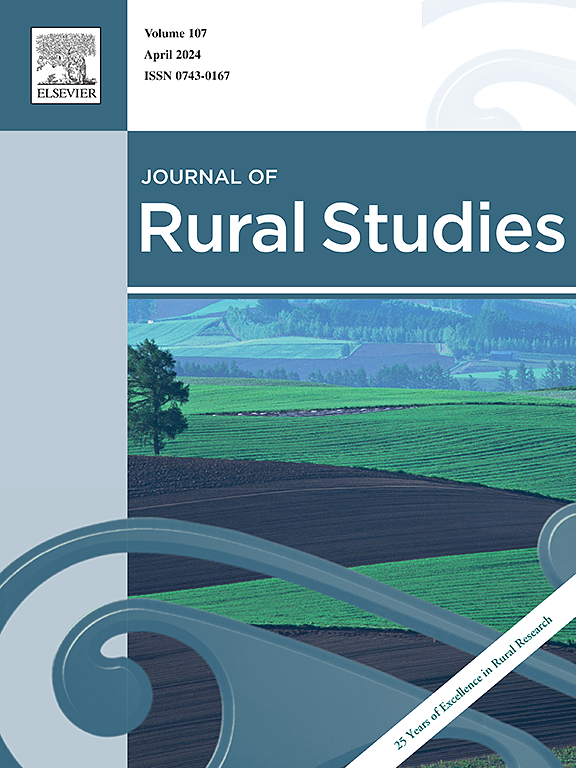Afforestation on agricultural land in England: Applying the Theoretical Domains Framework and Behaviour Change Wheel to identify the enablers of change within farmer behaviour
IF 5.7
1区 社会学
Q1 GEOGRAPHY
引用次数: 0
Abstract
Increasing woodland creation and tree planting on agricultural land requires significant changes in farmer behaviour. Understanding the underlying factors influencing farmers' behaviour can help to inform the design and development of effective policies and interventions that aim to facilitate an increase in tree cover and woodland on farmland. This paper presents a systematic review of 104 studies, analysed using the Theoretical Domains Framework (TDF) model to identify the barriers and enabling factors that will help or hinder woodland creation and tree planting on farmland. These insights, together with the Behaviour Change Wheel (BCW), support the identification of policy interventions aimed at facilitating farmer behaviour change. The most frequently reported TDF domains related to ‘environmental context and resources’, particularly in terms of individual characteristics (e.g. age, education, life stage), structural on-farm factors (e.g. tenure, farm size, land suitability) and access to government grant schemes; and ‘social influences’ such as group norms, peer networks and consumer demand. Motivational factors such as ‘professional identity’ and ‘beliefs about consequences’ were also important enablers or barriers. Heterogeneity of the farming community means that a mix of interventions is required which align with the different beliefs, values, attitudes and contexts of farmers. Applying the TDF and BCW to farm woodland creation behaviour can be helpful for developing theory-informed policy interventions, but the method could be improved through adaptation to account for the specific context of farmer behaviour.
英国农业用地造林:应用理论领域框架和行为改变轮来确定农民行为变化的推动因素
在农业用地上增加林地创造和植树需要农民行为的重大改变。了解影响农民行为的潜在因素有助于为设计和制定有效的政策和干预措施提供信息,以促进增加农田的树木覆盖和林地。本文对104项研究进行了系统回顾,并使用理论领域框架(TDF)模型进行了分析,以确定有助于或阻碍农田林地创造和植树的障碍和有利因素。这些见解与行为改变轮(BCW)一起,有助于确定旨在促进农民行为改变的政策干预措施。最常报道的TDF领域与“环境背景和资源”有关,特别是在个人特征(如年龄、教育、生命阶段)、结构性农场因素(如权属、农场规模、土地适宜性)和获得政府赠款计划方面;以及“社会影响”,如群体规范、同伴网络和消费者需求。“职业认同”和“对后果的信念”等激励因素也是重要的促成因素或障碍。农业社区的异质性意味着需要采取与农民的不同信仰、价值观、态度和背景相一致的综合干预措施。将TDF和BCW应用于农场林地创造行为有助于制定有理论依据的政策干预措施,但该方法可以通过适应农民行为的具体背景来改进。
本文章由计算机程序翻译,如有差异,请以英文原文为准。
求助全文
约1分钟内获得全文
求助全文
来源期刊

Journal of Rural Studies
Multiple-
CiteScore
9.80
自引率
9.80%
发文量
286
期刊介绍:
The Journal of Rural Studies publishes research articles relating to such rural issues as society, demography, housing, employment, transport, services, land-use, recreation, agriculture and conservation. The focus is on those areas encompassing extensive land-use, with small-scale and diffuse settlement patterns and communities linked into the surrounding landscape and milieux. Particular emphasis will be given to aspects of planning policy and management. The journal is international and interdisciplinary in scope and content.
 求助内容:
求助内容: 应助结果提醒方式:
应助结果提醒方式:


